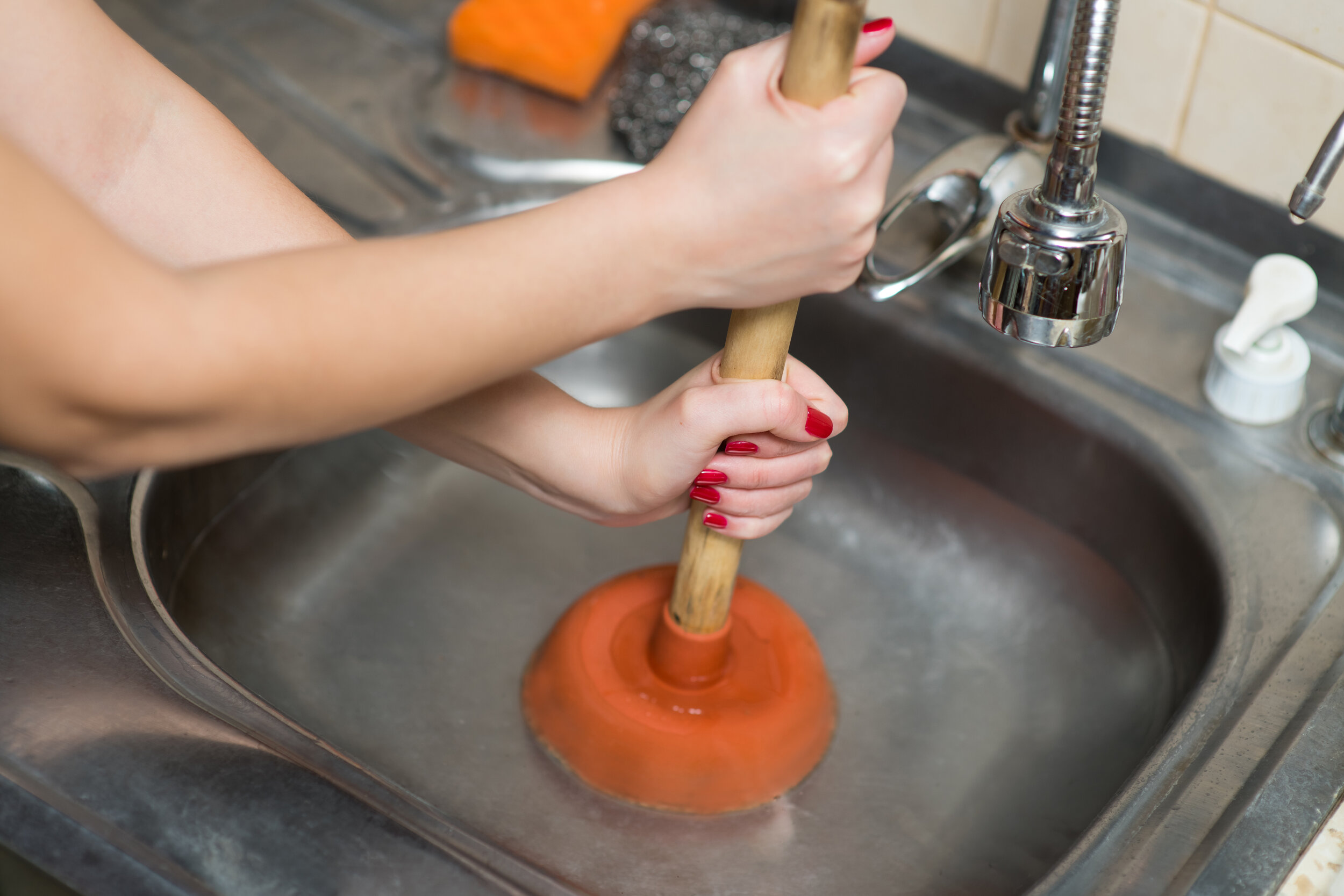Unclogging a sink is a plumbing move you’ll often need to undertake as soon as possible — sure, maybe it’s not quite the same crisis as a stopped-up toilet, but depending on how bad the clog is and how slowly your sink is draining (if it’s even draining at all), this could potentially put your sink out of order until you’re able to get those pipes clear.
A clog could strike either your bathroom sink or your kitchen sink, and either could be just as bad as the other. Even though you know to be diligent and careful not to put anything down your sink that you shouldn’t, every household will see its fair share of gunk get washed away. Cosmetic products, shaving clippings, and oil-based lotions can all cause a build up in the bathroom sink, whereas your kitchen sink might get plenty of cooking oil, vegetable skins, or swollen grain products. It’s all out of sight and out of mind until that sink starts draining slowly.
Fortunately, a mild clog is a problem you can solve yourself. Here are a few methods you can try before you call on a plumber to diagnose a serious clog:
Start by trying a plunger.
And no, you shouldn’t use the plunger that you use in your toilet — buy a separate plunger that you reserve exclusively for the sink. (Because who wants to put their toilet plunger in the sink — especially their kitchen sink?) Go for a simple plunger that has a flat rim rather than the curved-rim ones you use for the toilet. Fill your sink with about two inches of water, just enough to cover up the head of the plunger when you press its mouth against the drain. Allow the plunger to suction against the drain and work the handle up and down with a few strong jerks. If the suction doesn’t dislodge after several attempts, you may need to move on to another method.
Use a mixture of baking soda and vinegar.
We’ve talked about this one before on our blog, but baking soda and vinegar make an easy, nontoxic combination you can rely on to break up debris that’s collecting in your pipes so you can flush it away. Simply sprinkle a generous amount of baking soda down the drain and allow it to sit for a few minutes. Then pour a generous amount of white vinegar, which will chemically react with the baking soda and start to foam. Once this foaming action has subsided, ideally leaving all that gunk in your pipes loosened up, you can pour boiling water down the sink to carry all the leftover debris away.
Try a wet vac.
If you can’t force your clog farther down the drain, sometimes your option is to draw the clog back up and out using a wet vac. Bear in mind that you should never attempt this method using a regular vacuum cleaner for dry messes — it will not be strong enough, and all the moisture and wetness down in your sink will damage it.
Start by cutting the top half off a plastic soda bottle or water bottle. Place the mouth of the bottle down the drain, leaving the open side up and exposed. Then position the hose of the wet vac down inside the half-bottle so that its suction will be centered right on the inside of the bottle’s neck. Turn the wet vac on and see whether the clog comes back up and lodges itself right at the mouth of the plastic bottle. If this is successful, simply remove the debris and throw it away. Flush the sink with hot water to eliminate any remaining residue down in the pipes.
Use a wire hanger as a makeshift snake.
If you have an especially stubborn clog that won’t respond to a wet vac’s suction, you could try pulling it back up using a wire hanger. Take a regular wire hanger you brought home from the dry cleaners, unfold it, and straighten it out as much as you can. Then it’s time to snake the wire down the sink drain — for bathroom sinks, you may have to remove your drain stopper.
Push the wire along the drain until you feel resistance from whatever is causing the clog. Move the wire around slowly but steadily to dislodge the debris, then draw it back up. In some situations, you may bring up a significant amount of debris that has latched onto the end of the wire. In other situations, you might have simply broken the clog up enough down inside the pipes that you can now flush it away with hot water. *If your home is older than 50 years call a plumber before trying this.
Prevent clogs going forward.
If you successfully remove this clog, your best bet is to be more careful about what goes down your sink in the future. Avoid letting any food waste go down a sink that doesn’t have a garbage disposal, and limit the amount of hair that gets flushed down bathroom sinks. Remember that oils and oil-based products, even those that are liquid at room temperature, can build up along the insides of pipes and trap other debris. Run hot water down your drains from time to time to keep them clean.

